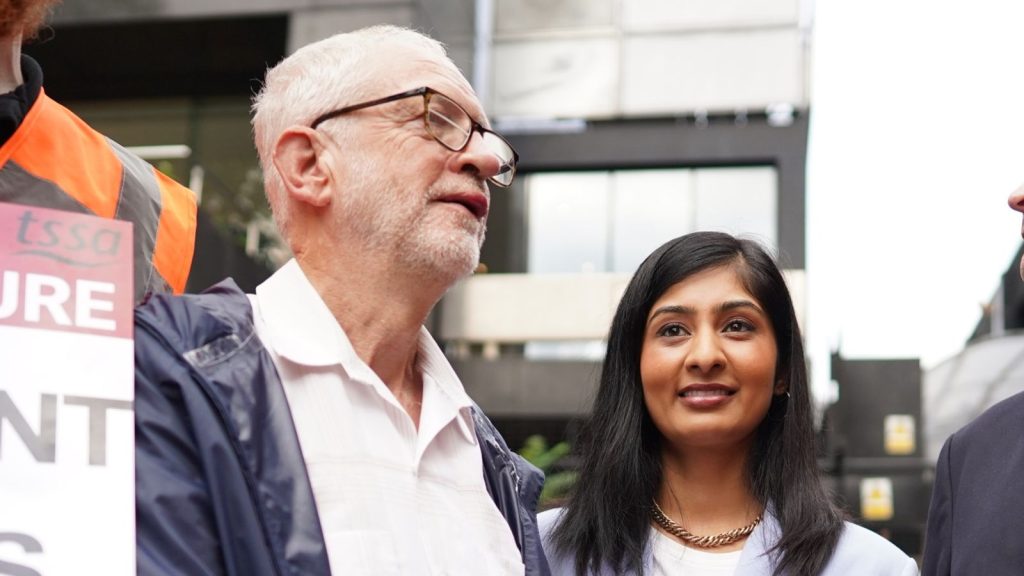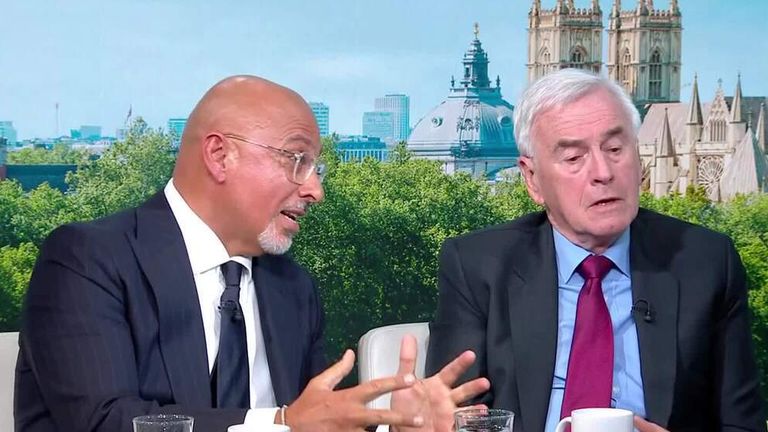A row has broken out at the top of Your Party – despite the left-wing party being so new it doesn’t yet have an official name.
The dispute between Jeremy Corbyn and co-leader Zarah Sultana centres on emails sent to supporters encouraging them to pay for membership.
But what was wrong with the membership emails and how has it led to a row?
What happened with Your Party emails?
On Thursday morning, Your Party supporters who had signed up to get free updates via the party’s website received emails encouraging paid membership with a link to a membership portal with a new domain name.
The website, which Ms Sultana also shared on X, offers visitors the option to pay for either a regular or concessionary membership for £55 or £25 a year.
Hours later, the official Your Party X account posted a statement – signed by Mr Corbyn and all other MPs involved with the party except for Ms Sultana – saying the email was “unauthorised” and that supporters should ignore it.
“If any direct debits have been set up, they should be immediately cancelled,” the statement read.
In a further statement, the party said: “A false membership system has been unilaterally launched, data collected and payments taken.”
It added that it had reported itself to the Information Commissioners Office.
Claims of a ‘sexist boys’ club’
After the party said the email and domain were unauthorised, Ms Sultana, who announced the new party in July, released a statement revealing that she had launched the membership portal herself, despite not having the “dual authorisation of both myself and Jeremy – which was the agreement made at the start of this process”.
She said she took the step “after being sidelined” by the MPs named in the Your Party statement – Mr Corbyn, Ayoub Khan, Adnan Hussain, Iqbal Mohamed and Shockat Adam.
She added: “My sole motivation has been to safeguard the grassroots involvement that is essential to building this party.
“Unfortunately, I have been subjected to what can only be described as a sexist boys’ club: I have been treated appallingly and excluded completely.”
She insisted that the new domain was a “safe, secure, legitimate portal for the party”.
She called on Mr Corbyn to meet with her and “agree to make public all agreed structures, processes and decision-making protocols” to ensure that “nothing like this can ever happen again”.
Mr Corbyn has not responded to Ms Sultana.
Read more:
Trump tells PM how to stop small boats
Could Trump’s visit haunt Britain’s establishment?
In its latest statement, Your Party said: “These developments are a blow for everyone who has put their hope in a real alternative.
“Following Zarah Sultana’s unilateral announcement of the launch of a new party on 3 July, an agreement was reached for the Independent Alliance MPs to kickstart the founding process and deliver an open, democratic conference to found a new party.
“Zarah signed up to this and was welcomed into the Independent Alliance. She has not been excluded from any discussions – and everyone involved has been committed to a process rooted in inclusivity and mutual respect.”
Row ‘brewing for some time’
The dispute comes after Your Party earlier told supporters that membership would open by the end of September, followed by national assemblies in October and an online vote on the party’s new name, before a founding conference in November.
A source close to Your Party told Sky News that a row between the co-leaders had been brewing “for some time”.
A source also said “diplomatic efforts” were under way to resolve it, and that the pair were attempting to mediate behind the scenes to salvage the party’s future.
The new organisation got off to a rocky start when Ms Sultana appeared to blindside Mr Corbyn by announcing the party’s formation before him.
The pair confirmed the launch a few weeks later, sharing a link to a website called Yourparty.co.uk, but then clarified that was not actually the name and members would decide that in due course.
As Sky News previously reported, a debate soon raged about its leadership model, with split opinions on whether Mr Corbyn and Ms Sultana should co-lead the party or whether outside candidates should be given the chance to run in a “grassroots” contest.
Sky News has contacted both Mr Corbyn and Ms Sultana for comment.
‘Embarrassing’ rift leaves members in limbo
Ms Sultana claimed on Thursday that more than 20,000 people had become paid members.
At the time of writing, the domain is still up, and visitors can input their payment details.
Several supporters who signed up have told Sky News about their frustrations with the party.
Sam T, who signed up to the monthly membership, said he was considering cancelling his membership and “might as well go and give £5 to someone on the street”.
Another supporter, Layla C from Glasgow, said she had cancelled her membership until she gets clarity on the situation, adding: “I don’t think it’s a very good look for either of them. The right-wing will love this.”
Dan, from London, signed up for a full membership but admitted that “the split is quite embarrassing”.
But he added that he became a member “because of Zarah” and added he would be staying a member because “as long as the money is going to the party, then that’s all good”.
Ben Clinton from London said that while he wanted to see the co-leaders work together, he was not put off by the row.
“If you’ve got an old boys club who are more concerned about pointless control freakery in the background, then I think it’s time for a new generation to take control,” he said.



